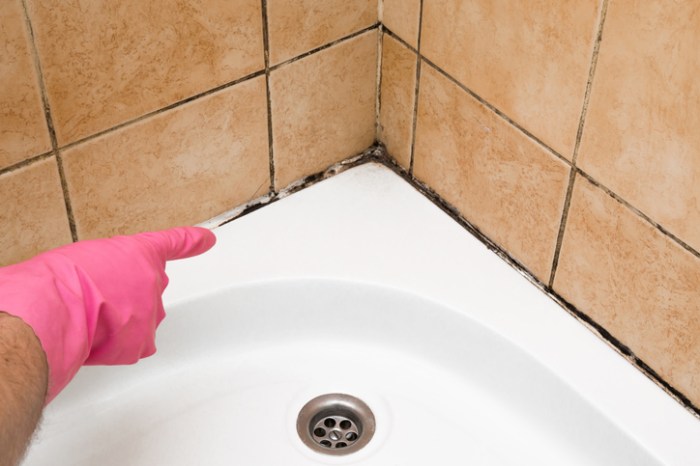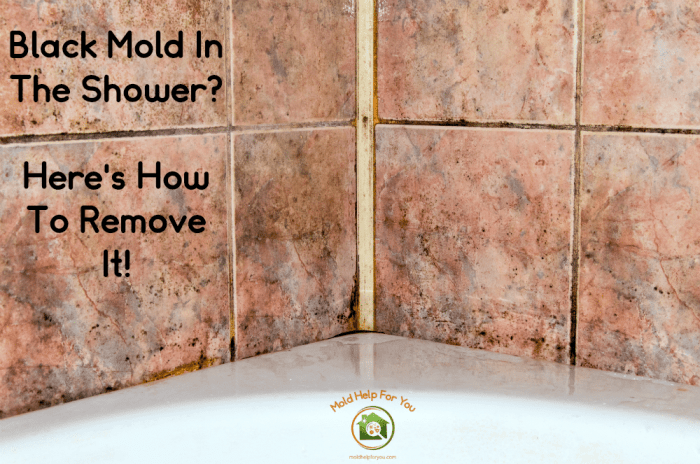Bathrooms are prone to moisture buildup, making them ideal breeding grounds for mold and mildew. These fungi can pose health risks and create an unsightly appearance. In this guide, we’ll delve into the causes and prevention of mold and mildew on bathroom floors, empowering you with practical solutions to maintain a clean and healthy bathroom environment.
Understanding the conditions necessary for mold and mildew growth, as well as the potential health risks associated with exposure, is crucial. By implementing effective prevention methods, you can avoid these issues and ensure the longevity of your bathroom.
Prevention Methods
Preventing mold and mildew growth on bathroom floors is crucial for maintaining a clean and healthy environment. Here are several preventive measures to consider:
Importance of Proper Ventilation and Moisture Control
- Ensure proper ventilation in the bathroom by installing an exhaust fan or opening windows to allow moisture to escape.
- Control moisture levels by using a dehumidifier or running a fan during and after showers.
- Wipe down wet surfaces, such as shower walls and floors, after use to reduce moisture buildup.
Use of Mold-Resistant Materials and Sealants
- Opt for mold-resistant flooring materials like ceramic or porcelain tiles, vinyl flooring, or moisture-resistant drywall.
- Apply mold-resistant sealants to grout lines, around fixtures, and other areas where moisture can accumulate.
- Inspect and repair any leaks or cracks in plumbing or fixtures promptly to prevent water damage and mold growth.
Cleaning and Maintenance
Regular cleaning is crucial to prevent mold and mildew buildup on bathroom floors. This involves using effective cleaning solutions and thorough drying practices.
Cleaning Solutions
Various cleaning solutions can be used to combat mold and mildew, including:
- Bleach: A powerful disinfectant that kills mold spores.
- Vinegar: A natural acid that inhibits mold growth.
- Commercial Cleaners: Specifically designed for mold and mildew removal, often containing bleach or other disinfectants.
Application Methods
The application method depends on the cleaning solution used:
- Bleach: Dilute 1 cup of bleach in 1 gallon of water. Apply with a sponge or cloth, let it sit for 10-15 minutes, and rinse thoroughly.
- Vinegar: Spray undiluted vinegar on the affected area. Let it sit for 30 minutes and wipe away with a clean cloth.
- Commercial Cleaners: Follow the manufacturer’s instructions for application and dilution.
Drying Surfaces
After cleaning, it is essential to dry the bathroom floor thoroughly. Use a clean towel to absorb excess moisture and open windows or turn on a fan to promote air circulation.
Moisture Control
Controlling moisture levels is crucial for preventing mold and mildew growth. Proper ventilation, exhaust fans, dehumidifiers, and moisture-absorbing materials all play vital roles in keeping the bathroom environment dry.
Ventilation
Adequate ventilation helps remove excess moisture from the air. Open windows or doors when showering or bathing to allow fresh air to circulate. Ensure the bathroom has an exhaust fan that is installed correctly and vents outside the house. This fan should be run during and after showers or baths to extract moisture-laden air.
Exhaust Fans and Dehumidifiers
Exhaust fans are essential for removing moisture from the bathroom air. Install an exhaust fan with a capacity of at least 50 cubic feet per minute (CFM) and ensure it vents directly to the outside. Dehumidifiers can also be used to reduce moisture levels in the bathroom.
Choose a dehumidifier with a capacity appropriate for the size of the bathroom and run it as needed to maintain a relative humidity level below 50%.
Moisture-Absorbing Materials
Moisture-absorbing materials can help reduce moisture levels in the bathroom. Place moisture-absorbing mats or rugs near the shower or bath to absorb water spills. Silica gel packets or moisture-absorbing crystals can also be placed in strategic locations to absorb excess moisture from the air.
Addressing Existing Mold and Mildew
Once you’ve identified mold or mildew growth on your bathroom floor, prompt action is crucial to prevent further spread and potential health concerns. Here’s a comprehensive guide to help you tackle existing mold and mildew effectively.
Identifying and Removing Mold and Mildew
Mold and mildew often appear as discolored patches or spots on surfaces. They can range in color from black to green, brown, or white. To remove them, follow these steps:
- Protect yourself with gloves, a mask, and eye protection.
- Scrub the affected area with a stiff brush and a cleaning solution containing bleach or another mold-killing agent.
- Rinse thoroughly with clean water and dry the area completely.
- Repeat the process if necessary until all visible mold and mildew are removed.
Use of Bleach and Other Cleaning Agents
Bleach is a powerful mold and mildew remover, but it should be used cautiously and according to the manufacturer’s instructions. Other effective cleaning agents include:
- Hydrogen peroxide
- Vinegar
- Commercial mold and mildew removers
Addressing the Underlying Cause
To prevent mold and mildew from recurring, it’s crucial to address the underlying cause of moisture buildup. This may involve:
- Improving ventilation by installing an exhaust fan or opening windows
- Fixing leaky faucets or pipes
- Reducing humidity levels with a dehumidifier
- Cleaning bathroom surfaces regularly to remove moisture and soap scum
Last Point
Preventing mold and mildew on bathroom floors requires a multifaceted approach. Regular cleaning, proper ventilation, moisture control, and the use of mold-resistant materials are all essential elements. By addressing the underlying causes of moisture buildup and implementing these preventive measures, you can create a bathroom environment that is both aesthetically pleasing and healthy.



